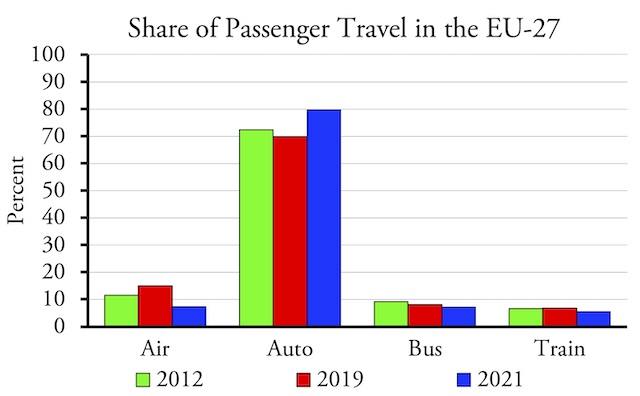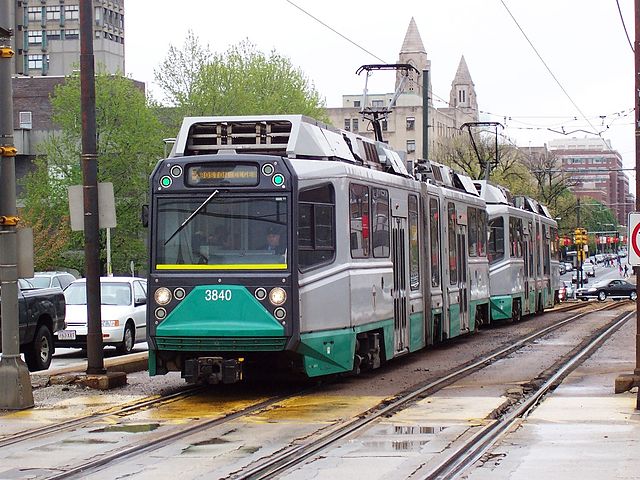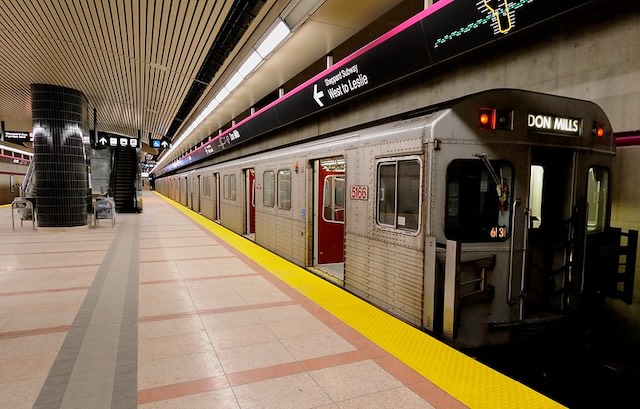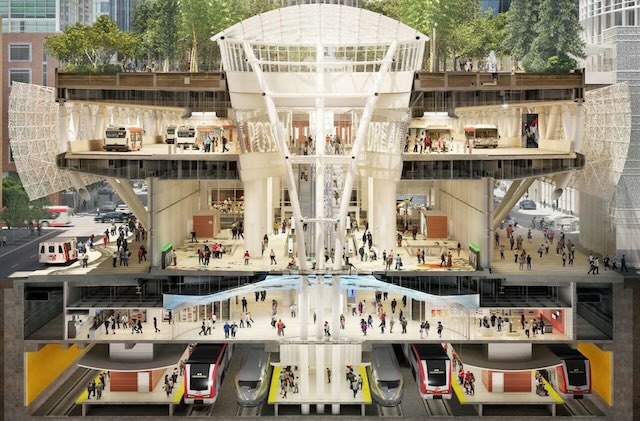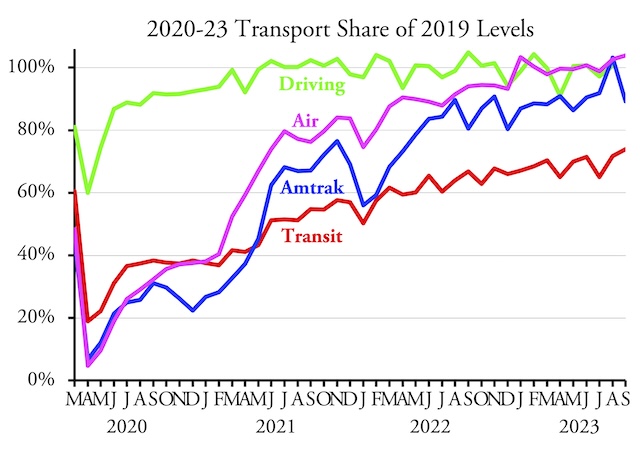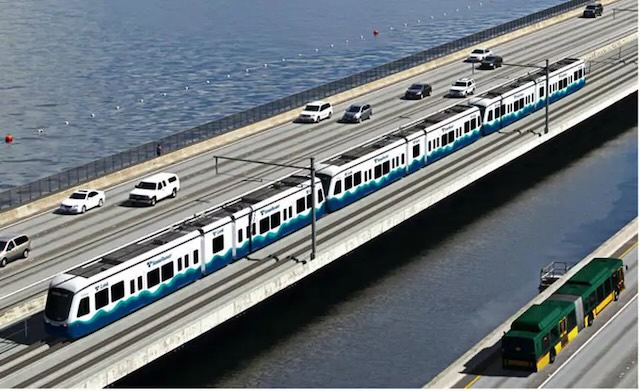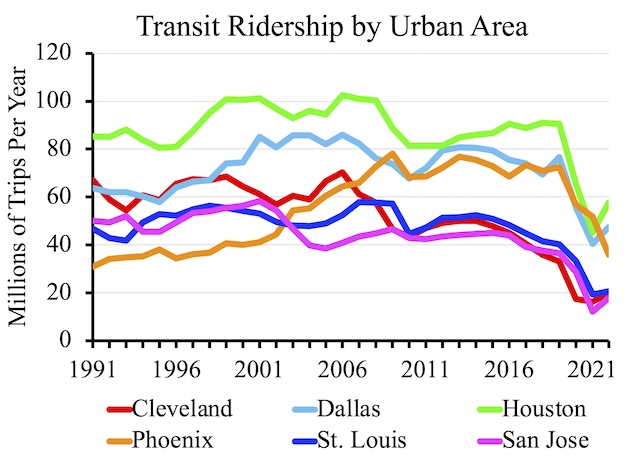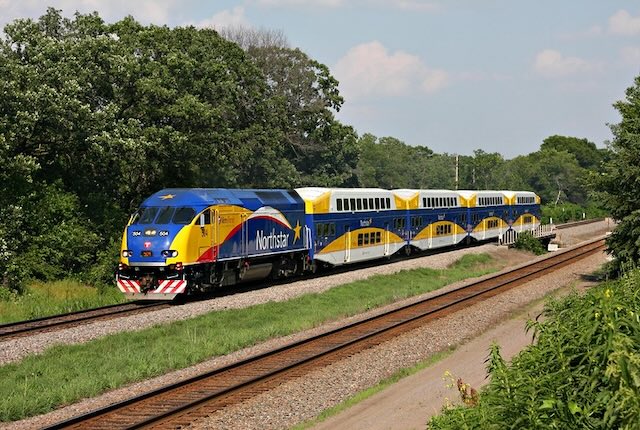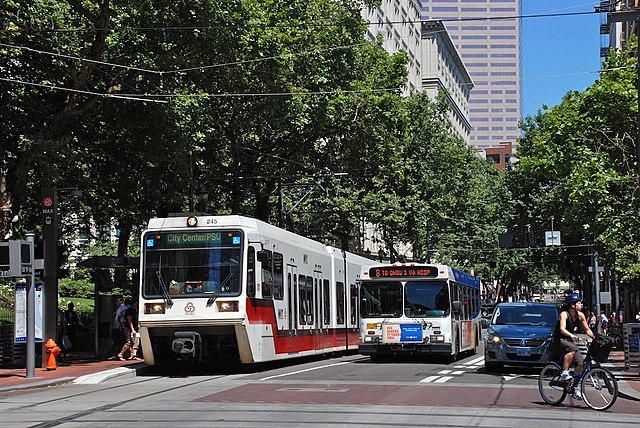The media treat Americans to a constant drumbeat of how much better European passenger trains are and why we need to spend hundreds of billions or trillions improving our train system. The latest is a report that overnight trains are proving they can replace air travel by “play[ing] an important niche role on long-distance routes of between 500 and 1,000 miles.”
A look at the actual data reveal that, despite huge government subsidies to European passenger trains, rail was barely holding its own before the pandemic and has drastically declined since the pandemic. Between 2012 and 2019, the share of passenger travel carried by airlines grew from 11.6 to 15.0 percent while the share carried by trains grew only from 6.7 to 6.8 percent. Most of the growth of rail travel was at the expense of bus travel, which declined from 9.1 to 8.1 percent. Auto travel from 72.3 to 69.8 mostly because of low-cost airlines. Continue reading

